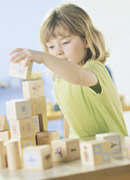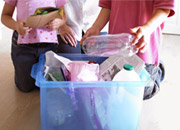Behaviour
Caring for babies
Bottle feeding
Changing a nappy
Cleaning and sterilising bottles
Daily cleaning tasks
Helping new children settle in
Preparing for a nappy change
Sleep patterns – babies
Sleep routines – babies
Toilet training
Caring for children
Allowing time for practice
Dressing/undressing
Mealtimes
Nappy change
Packing away/caring for the environment
Sleep/rest time
Toileting
Common self-help milestones
Tips for sleep and rest time
Self image
Communication
Body language
Limits and guidelines
Ways children communicate
Greeting children and families
Modelling appropriate communication
Questioning
Verbal and non–verbal communication
Acknowledging children's feelings
Listening attentively
Communicating with Aboriginal and Torres Strait Islander parents/carers
Development
Allowing time for practice
Dressing/undressing
Mealtimes
Nappy change
Packing away/caring for the environment
Sleep/rest time
Toileting
Common self-help milestones
Creative development
Language development
Modelling positive relationships
Physical development
Sharing and taking turns
Sleep patterns – babies
Sleep routines – babies
Encourage independent problem solving
Fundamental movement skills
Health, hygiene and safety
Coping with stress
Correct manual handling principles
Daily cleaning tasks
Hand washing
Hand washing poster
Manual handling overview
Toilet training
Safety checklist
Learning experiences and play
Environmentally friendly learning experiences
Learning experiences for different development areas
Creative resource materials
Arranging the environment to facilitate learning and pleasure
Indoors and outdoor areas
Creating a positive physical environment
Legal and ethical issues
Child abuse case studies
How do I recognise when a child or young person is at risk?
Tips on dealing with disclosures
Observation methods
Arranging Experiences (PDF 351Kb)
Recording observations
Rules for making observations
What you can learn from observations
Programming
Children’s interests, strengths, needs and skills
Extending the children’s interest in dinosaurs
Objective observation
Planning an OSHC environment
Behavior management plan
Planning enjoyable experiences
Planning experiences for 0 - 2 years age group
Planning experiences for 2 - 3 years age group
Planning experiences for 3 - 5 years age group
Environmentally friendly learning experiences
All experiences should be environmentally friendly.
It is important to promote the environment, and its protection, to the children in your care. Children learn from others, and the way you design your experiences can encourage them to be aware of the environment from a young age.
The following points need to be considered to support and promote environmentally friendly practices when programming experiences for the children in your care.
Types of equipment

When looking at purchasing equipment for your centre, try to include wooden toys and pieces of equipment that can be used in many ways rather than a single purpose.
Wooden toys and equipment have a smooth surface that is pleasant for a child to play with and is a representation of the natural elements of the world around them. Avoid purchasing too many plastic toys and equipment that have a single play purpose.
Care of equipment

Children will learn appreciation of the materials and caring for the environment around them if they are involved in contributing to the care of equipment. For example, children can polish wooden tables, shelves and wooden indoor and outdoor blocks.
The children can rake the sandpit/ grass and pick up fallen leaves and place them in the compost bin for recycling to put on the garden beds.
The children can also plant flowers and vegetables which can later be picked. Decorate the lunch tables with the flowers. Vegetables and herbs can be used for morning and afternoon teas and lunch.
After meal times the children can scrape their plates and wash and clean their dishes and cups. This promotes their independence and self-help skills and self-esteem by achieving success. By doing this, the children are making a contribution to the overall functioning of the program.
Packing away
This is another way children can make a positive contribution to the program. Packing away can be a more successful and enjoyable experience if the adult adopts a cooperative, rather than authoritarian, approach. Instead of issuing 'nag and drag' instructions, why not invite and encourage children by making it a game, explaining the value of caring appropriately for the materials and identifying the next part of the program? It is also important to acknowledge the children's efforts and contribution.
However, to avoid the process of 'too much packing away' some of the materials can be left set up as they were before children go to lunch or when they go home at night. This provides opportunities for playing with the materials at a higher level.
Water
Unfortunately many parts of Australia are experiencing droughts. Many childcare facilities are now installing water tanks that provide rainwater from the roof for children to water the garden and use in play.
If you able to provide water play in your program, try to set the experience up over a grassed area so any spills are soaked up and used effectively to water the grass. Make sure there is shade to avoid evaporation of the water as well as protecting the children from becoming sunburnt.
Water play is a valuable and fantastic experience to offer as an integral part of the program. Water play is a sensory experience that provides children with the opportunity to manipulate, explore and experiment. They can master this material by touching, pouring, measuring, tasting, mixing with sand and sawdust, bathing in it, bathing dolls, watering the garden and painting with it. Water play can serve to relax and calm children who are upset, or who display strong emotional outbursts.
Reduce, recycle, reuse and composting

Teaching children to reduce the use of plastic, paper, cardboard and to recycle any plastics, glass, cardboard and paper will help to educate children the importance of moving away from the 'Throw away society' we currently live in.
The use of recycled paper, cardboard and plastic containers as part of the program will encourage children to think creatively of recycling and reusing materials rather than throwing them out.
Establishing a compost bin encourages worms that are very good for the garden. Children can place appropriate lunch scraps and leaves in to the compost. This will show the children how to recycle and reuse waste in a useful way. The children can then place the compost on the garden beds and in pot plants to fertilise the soil. An adult will need to help with this.